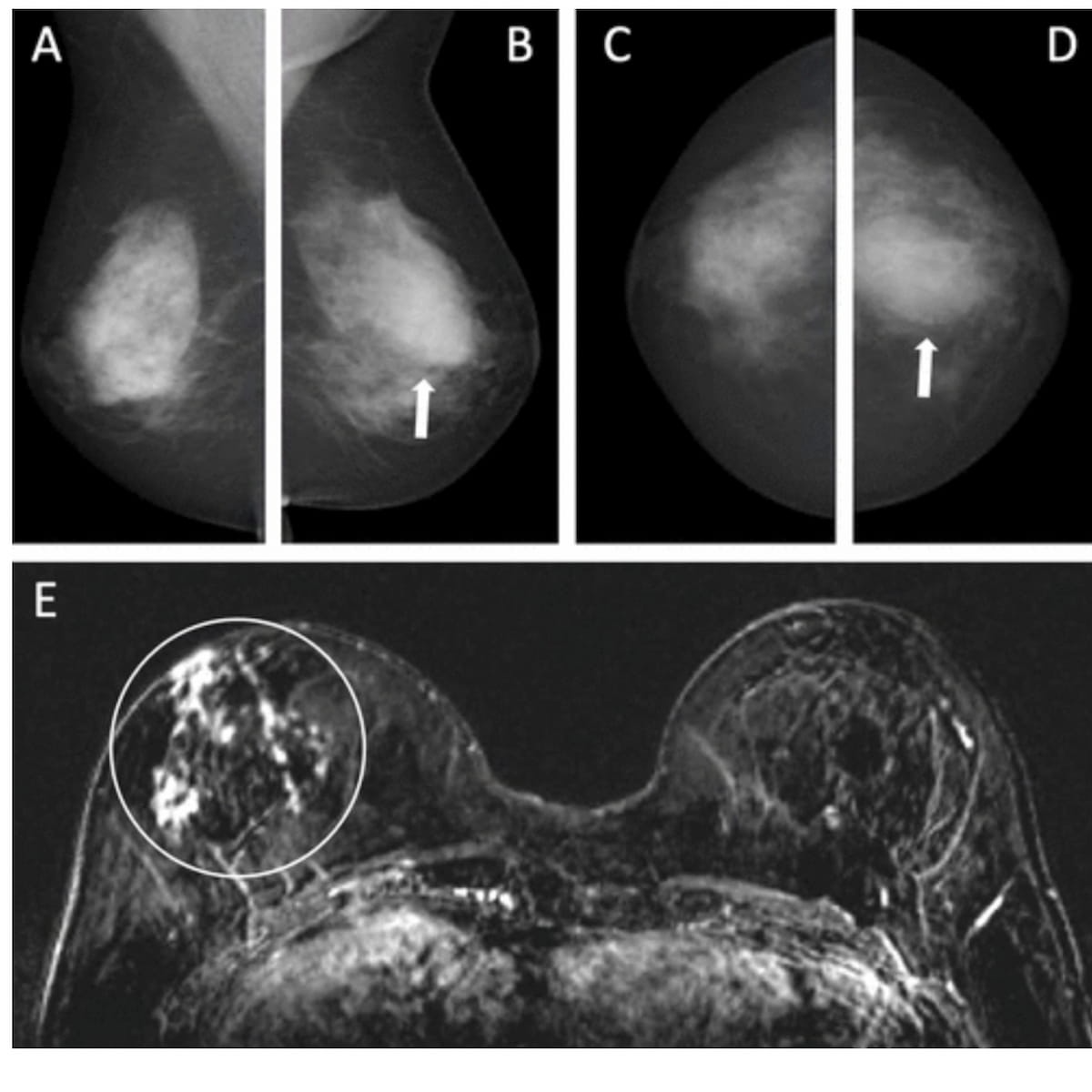Emerging research suggests that mammography-based artificial intelligence (AI) may bolster triage and facilitate more efficient use of breast magnetic resonance imaging (MRI) for women with intermediate risk of breast cancer.
For the retrospective study, recently published in Radiology, researchers reviewed data for the AI system (Transpara version 1.7.0, ScreenPoint Medical) in 760 women (mean age of 48.9) with intermediate breast cancer risk who had concurrent mammography and breast MRI exams (a combined total of 2,819 exams). The study authors utilized the AI system at mammography screening to determine which patients would receive supplemental breast MRI. Trained with approximately 200,000 mammograms, the AI system utilizes a 0-10 score to determine suspicion of breast cancer, according to the study.
At a supplemental breast MRI rate of 50 percent, the researchers found that the AI model could detect 84 percent of breast cancer cases, including mammographically occult cancers in 68 percent of cases.
While noting the potential of the AI system in settings with limited MRI capacity as well as cost issues for patients, the study authors also acknowledged a 72 percent area under the receiver operating characteristic curve (AUC) overall for breast cancer detection in women with intermediate breast cancer risk.
“A scenario in which only part of the intermediate-risk group is referred for MRI after AI triaging may be more cost-effective, but it will not fully eliminate the chance of missing mammographically occult breast cancer that would have been recognized at MRI,” wrote lead study author Suzanne L. van Winkel, Ph.D., who is affiliated with the Department of Medical Imaging at Radboud University Medical Center in Nijmegen, the Netherlands, and colleagues.
Three Key Takeaways
1. AI-driven triage for MRI screening. The AI model demonstrated potential in optimizing MRI referrals, detecting 84 percent of breast cancer cases, including 68 percent of mammographically occult cancers, which could be beneficial in resource-limited settings.
2. Performance in women with prior breast cancer. Contrary to common AI vendor recommendations, the AI model showed strong performance (81 percent AUC) in women with a personal history of breast cancer, suggesting it may still be useful in this group despite concerns about scar tissue and calcifications.
3. Breast density and AI accuracy. The study found no statistically significant link between breast density and false-negative AI results, indicating that AI’s discriminative power remains high even in populations with dense breasts.
However, the researchers noted an 81 percent AUC for the AI model in women with a personal history of breast cancer.
“The excellent performance in this subgroup is in contrast to the recommendations of most vendors of AI for mammography, which tend to exclude the use of AI in women with prior breast cancer because scar tissue and dystrophic calcifications after breast surgery can reduce the reliability of AI scores. The performance of AI in these women might not be as poor as anticipated,” maintained van Winkel and colleagues.
(Editor’s note: For related content, see “Current and Emerging Insights on AI in Breast Imaging: An Interview with Mark Traill, MD, Part 3,” “Can an Emerging AI Model Enhance Early Breast Cancer Detection on MRI?” and “Can AI Bolster Breast Cancer Detection in DBT Screening?”)
While 74 percent of the study cohort had heterogeneously dense or extremely dense breasts, the study authors pointed out there was no statistically significant link between breast density and false-negative results with the AI model.
“The fact that the discriminative power of the AI system remains quite high in a population with dense breasts may explain why personal factors such as breast density and age were not associated with the probability of obtaining a false-negative AI result in our study,” posited van Winkel and colleagues. “It may also be that among women with intermediate risk, the value of breast density as a predictor of breast cancer may be less pronounced than in an average-risk screening population.”
